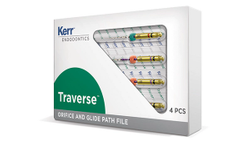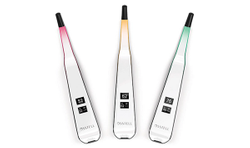- About Us
- Advertise
- Editorial
- Contact Us
- Terms and Conditions
- Privacy Policy
- Do Not Sell My Personal Information
© 2025 MJH Life Sciences™ and Dental Products Report. All rights reserved.
In pursuit of perfection
Perfection is said to be unattainable. However, we owe it to our patients to keep striving for that elusive standard every day.
Perfection is said to be unattainable. However, we owe it to our patients to keep striving for that elusive standard every day.
This month we are starting a new year and with that, you probably have either some resolutions or, at the minimum, some things you’d like to focus on and/or change. I’m no different. I always take time off between Christmas and New Years to just recharge, but I also like to look at the past year and then try and think about the year ahead.
As Technology Evangelist, I have worked hard over the years to bring you all as much information as I can about new devices, materials, and techniques. This year I will continue to do that, but I’ve decided to also occasionally discuss some topics I think will flat out improve our profession as well as the care we provide our patients.
This month let’s take a look at one of the most common product categories in our profession and how that category impacts a concept that is beaten into us from the first day we set foot into a dental institute of higher learning.
What does it mean to “focus on perfection?” I once heard the following joke and I thought it would be a great demonstration of what I’ll be discussing this month.
There was a college class full of a mix of engineering students and math students. It was being taught by Bob a mathematics professor. One day a friend, Sam, who happened to be an engineering professor approached him.
“Hey,” he said, “I bet I can tell which of your students are math majors and which are engineering by a simple test.” They agreed to try the experiment the next day.
That day, Sam got in front of the class and asked everyone to stand up and follow him to the parking lot where he lined them up in front of a brand-new Ferrari. “We are going to do an exercise,” he stated. “This is how it will work.”
First, he had all the students line up along the wall of the building facing the parking lot.
Sam then instructed, “Each time I tell you, each of you can cover half the distance to the Ferrari in front of us. The first one to reach it can have it.”
Continue reading on the next page...
Immediately all of the mathematics majors turned around and walked back inside the classroom. Sam than confidently said, “Here are the engineering students.”
The joke, of course, is that the math students had all quickly figured out that no matter how long they played the game, they would never reach the car because they can only get halfway there. Each time those halves grow smaller, but they never go away.
However, all the engineering students remained standing because they had reasoned that even if they could never actually reach the goal, they could get close enough to accomplish what they hoped to accomplish.
While this joke perhaps generalizes too much, it does speak volumes about what our goals should be.
In our training, we are constantly reminded that our goal is “perfection.” I put it in quotes there because, like the mathematics students, we all know perfection is unattainable. Given the environment we practice in, sometimes “clinically acceptable” can be a challenge. Yet, I think those who train us focus us on perfection for a very good reason. That reason is: If you are striving for perfection and can sometimes only achieve “acceptable” what would the result be if we started out with “acceptable” as the final goal?
Perfection is incredibly difficult or impossible to attain, but does that mean we should cease striving for it?
As Technology Editor for Dental Products Report, I get some incredible opportunities to learn about what we do. Recently, I had the opportunity to do some work with bonding agents in a laboratory setting. The exercise was to use a standardized industry-wide testing protocol to see just how strong our bonds to tooth structure truly are.
One of the many great things about doing your very own experiments in the lab is it gives you the opportunity to actually put things in context so you understand them on a personal level. Often manufacturers and their sales reps will share data with us in the forms of charts and graphs. The problem for us doctors is if we cannot translate what they show us into a form we understand, they might as well be speaking a foreign language (and for me maybe more so than others).
Continue reading on the next page...
So, to start this conversation let me give you some context. One of our most common procedures is “bread and butter” operative dentistry. We all place fillings every day and the success of these restorations is very important to our patients.
If our restorations fail quickly, our patients’ lives and health are negatively affected. That’s why aiming for perfection is so darn important! Yet, I think many of us struggle to define just what we are striving for when we strive for perfection.
I would argue that the best way to aim for this is to aim to put the tooth back into as close a state of physical strength as possible. Shade, anatomy, and other things are also important, but if our target cannot survive the physical and mechanical environment it exists in, then failure is a result not far over the horizon.
"Perfection is incredibly difficult or impossible to attain, but does that mean we should cease striving for it?"
So, my goal is for the tooth to be as strong as it was before it was weakened. To that end, it would be helpful to know just how strong the tooth is in the first place. Utilizing the same fracture-resistance testing used to fracture restorative materials, I fractured healthy tooth structure. It turns out that under this testing protocol, healthy teeth fracture at between 80 to 90 mPa. The specimens tested all fractured within that range.
Given that range, we now know how strong the tooth is. That piece of knowledge now equips us to understand what the “perfection” is we are aiming for. In order to put the tooth back into a state to withstand its environmental demands our goal is 80 to 90 mPa."
The frightening piece of information I personally learned in the lab is that practically all bonding agents currently on the market are falling FAR short of that number even when being used strictly according to the manufacturer’s instructions as well as being performed under ideal conditions.
So, the logical question to be asked is if before starting a procedure a doctor knows his or her material will provide an inferior result, why should that material be used? When our mission is to “strive for perfection” why would we begin with building blocks that are not the best available to us?
Continue reading on the next page...
Interestingly enough, there were several of us working in the lab that day and we compared our results. We each followed the instructions “to a T.” We were careful, we were patient, and we each got similar results.
The intriguing and somewhat frightening information I learned is there are some very popular bonding agents on the market that provide very poor clinical results. Knowing that the tooth is 80 to 90 mPa would you want a restoration in your own mouth that has a bond strength of <30 mPa? Personally, I would not, and there were some materials that no matter the tester, never exceeded 30.
I think the pursuit of perfection here demands that we, as doctors, ask our manufacturers for data and then make the effort to understand it as best we can. That isn’t always easy, and it may sometimes require asking for help, but that’s OK. Asking is how we learn and it’s a much better way to learn than making mistakes and learning from them.
I think it is also important that we demand from manufacturers that they use standardized testing protocols, not just ones that make their products appear superior.
"We all know that perfection is unattainable, however, we owe it to our patients to aim for it every single day."
Also, a focus on cost should not be the principal decision-making matrix in your practice. A doctor has to pay the bills, or they will not be able to help anyone-but a focus on costs is not the recipe for clinical success.
To use bonding agents as a sample here, I’ve had colleagues say, “Why should I pay $1.75 per use when I can pay $1.00?”
My reply is because using inferior products leads to inferior restorations and what does it cost in hard costs and reputation to redo restorations?
Clinical success leads to referrals. I’d much rather experience that kind of success than to save 75 cents per filling.
I love science and I also love the science of dentistry. This experience has had such a profound impact on me that I am setting up a testing facility in my office so I will be able to do all of this testing with my own hands. I feel having this unbiased information in my hands is that critical.
I know most of you do not have the space or the time to do these kinds of things for yourself, but the good news is I will be gladly sharing some of this info here in the pages of Dental Products Report. That way we are not limited in the sources of our information.
In closing, we all know that perfection is unattainable, however, we owe it to our patients to aim for it every single day. They deserve nothing but our very best and I will do my very best to provide you with the information you need to perform at your very best for them.
It’s going to be a lot of fun around here in 2020. I hope you enjoy the ride. And me? I’ve never been more excited to be your Technology Evangelist. Now let’s go places together!

 Download Issue: Dental Products Report January 2020
Download Issue: Dental Products Report January 2020

